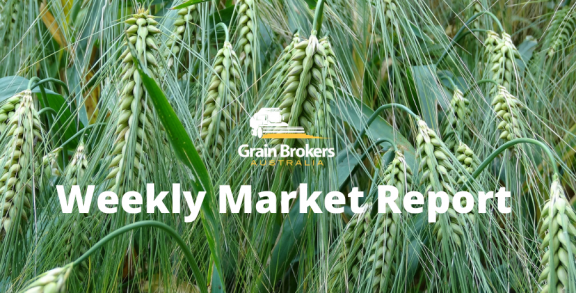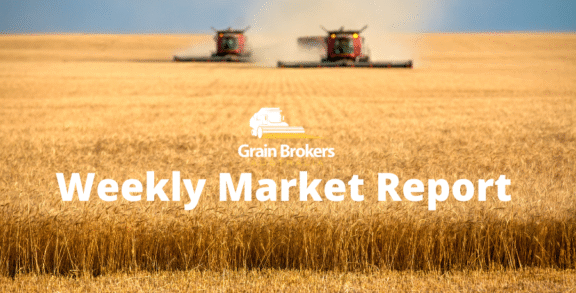
The Argentine government announced plans last Friday to re-establish a preferential currency exchange rate for soybean farmers to encourage them to sell their remaining 2021/22 season soybean stocks. The government is desperate to bolster international currency reserves, particularly United States dollars, to meet debt repayments due at the end of December.
The program is expected to be similar to the one run in September that offered an exchange rate well above the official rate. The “soybean dollar”, as it is being dubbed, would allow US dollars generated by soybean sales to be exchanged for the local currency at a rate of 230 pesos per dollar. The official rate was around 165 pesos per dollar on Friday afternoon. The program is slated to commence on November 28 and run through to December 31.
Argentina is the world’s third-biggest producer of soybeans, behind Brazil and the United States. It is also the world’s largest exporter of soybean meal and soybean oil, by-products of the country’s huge soybean processing industry. Soybean production in the 2021/22 season was just under 44 million metric tonne, around 88 per cent of which is expected to be crushed domestically.
Many farmers have preferred to hold their soybeans in storage as a hedge against inflation and a weakening local currency. Nonetheless, farmers are likely to react positively to the news and Argentina’s Economy Minister, Sergio Massa, expects the new program will bring in at least US$3 billion over the five-week period.
When the initiative was first introduced in September, growers received 200 pesos per dollar against an official rate of around 150. It is estimated that 13 million metric tonne of soybeans were registered for the preferred exchange rate during the month, boosting export sales of soybeans, soybean meal and soybean oil. It bought around US$8 billion into the country, US$5 billion of which is believed to be remaining in government reserves.
When the program ended on September 30, farmers shut up shop and stopped selling their soybeans. They have been quite reluctant to sell over the past two months in anticipation that the dramatic slowing of sales would force the government into offering another incentive program. Analysts believe that around 16 million metric tonne of soybeans from this year’s harvest still need to be priced into the export pathway.
However, the move did violate a condition of Argentina’s US$44 billion debt facility with the International Monetary Fund. A waiver had to be approved by the Washington-based lender before the September tranche could proceed. The IMF insisted at the time that such measures were not a substitute for sound macroeconomic policy.
The tinkering with the exchange rate in such a manner has infuriated the country’s agricultural sector. Farmers would much rather have a wholesale devaluation of the Argentine peso, but the government cannot afford such a move while negotiating payment terms on billions of dollars of debt with the IMF. The “soybean dollar” option is the next best alternative to boost the central bank’s reserves to comply with a key financial target in the IMF debt program.
Meanwhile, one of the worst droughts this century continues to ravage the country, with La Niña maintaining a powerful influence on weather patterns over Argentina for the third consecutive year. The area affected by drought now exceeds 160 million hectares, or more the 95 per cent of the country’s agricultural land. Furthermore, weather forecasters are not expecting a return to normal rainfall patterns until the first quarter of 2023.
The dry winter and spring have devastated the country’s winter crop production. The drought hampered the sowing program in May and June, and rainfall in most regions has been scarce ever since. The latest forecast from the Rosario Grains Exchange put this year’s wheat production at just 11.8MMT, with further downgrades possible. RGE is using a planted area of 5.9 million hectares and currently puts abandonment at 830,000 hectares. Last year RGE called the wheat crop 23MMT off 6.9 million hectares.
The Buenos Aires Grain Exchange is not quite as pessimistic, calling the wheat crop 12.4MMT off a slightly higher planted area of 6.1 million hectares. This is more than 8MMT lower than its opening 2022/23 forecast of 20.5MMT back in May. Its final 2021/22 production number was 22.4MMT off 6.7 million hectares. BAGE is calling 2022/23 barley production 4MMT off 1.3 million hectares compared to 5.2MMT off 1.2 million hectares last season.
With domestic wheat consumption running at 6.25MMT, exports are expected to plummet from 16.25MMT to less than 7MMT in the 2022/23 season. The government recently granted wheat exporters permission to push shipments contracted for the December to February period back by 360 days to safeguard domestic supplies.
The prolonged drought and lack of widespread spring rain are also having a massive impact on the summer crop seeding program and could mean that some producers will not meet their planting forecasts. Midway through last week, BAGE reported that 23.8 per cent of the forecast 7.3 million hectare corn crop had been planted, only 6.2 percentage points behind the same time last year but well behind the long-term average.
Argentina’s early corn crop is sown in September and October and usually accounts for 40-45 per cent of total corn plantings. Less than a third of the expected area had been seeded before the window closed at the end of last month. Analysts speculate that some producers may switch to soybeans instead of pushing all the unplanted areas to the second phase of sowing, which begins in December. BAGE is currently forecasting a corn crop of 50MMT.
However, the soybean picture is much worse, with just 19.4 per cent of the forecast area planted by Wednesday of last week, 19.9 percentage points behind last year. The lack of soil moisture is seriously limiting crop establishment in the absence of substantial rainfall. BAGE expects a soybean area of 16.7 million hectares to be planted, up from 16.3 million hectares last season. Production is forecast to increase from 43.3MMT to 48MMT.
While the latest “soybean dollar” program appears to have secured a US$3 billion commitment from the agricultural sector to help boost foreign currency reserves, farmers are only selling around one-third of their unsold stocks. The ongoing dry and resulting threat to new crop production will tighten the grower grip on old crop soybean reserves, with retention as a drought hedge added to the inflation and currency protection sought to date.
Call your local Grain Brokers Australia representative on 1300 946 544 to discuss your grain marketing needs.





